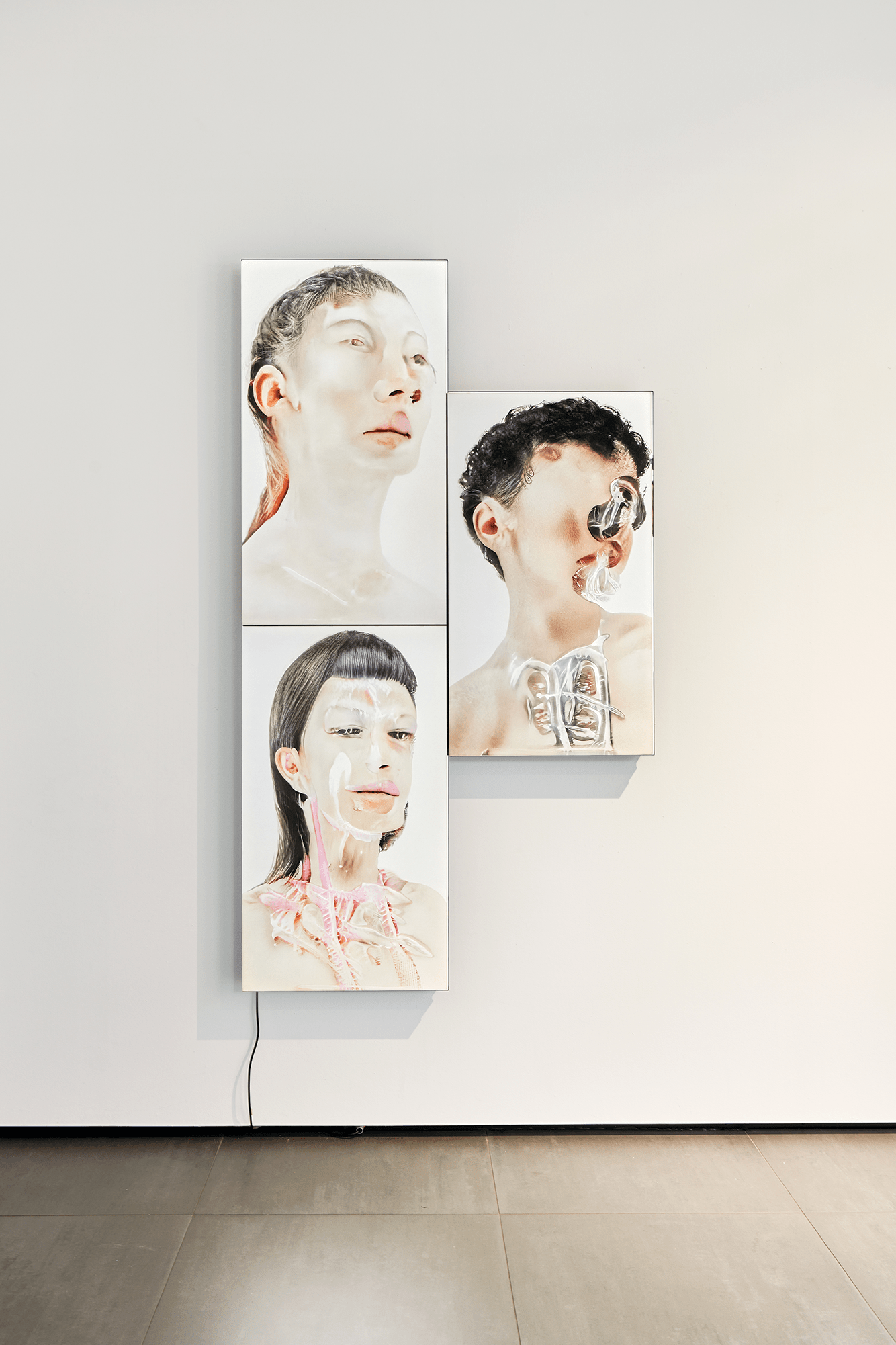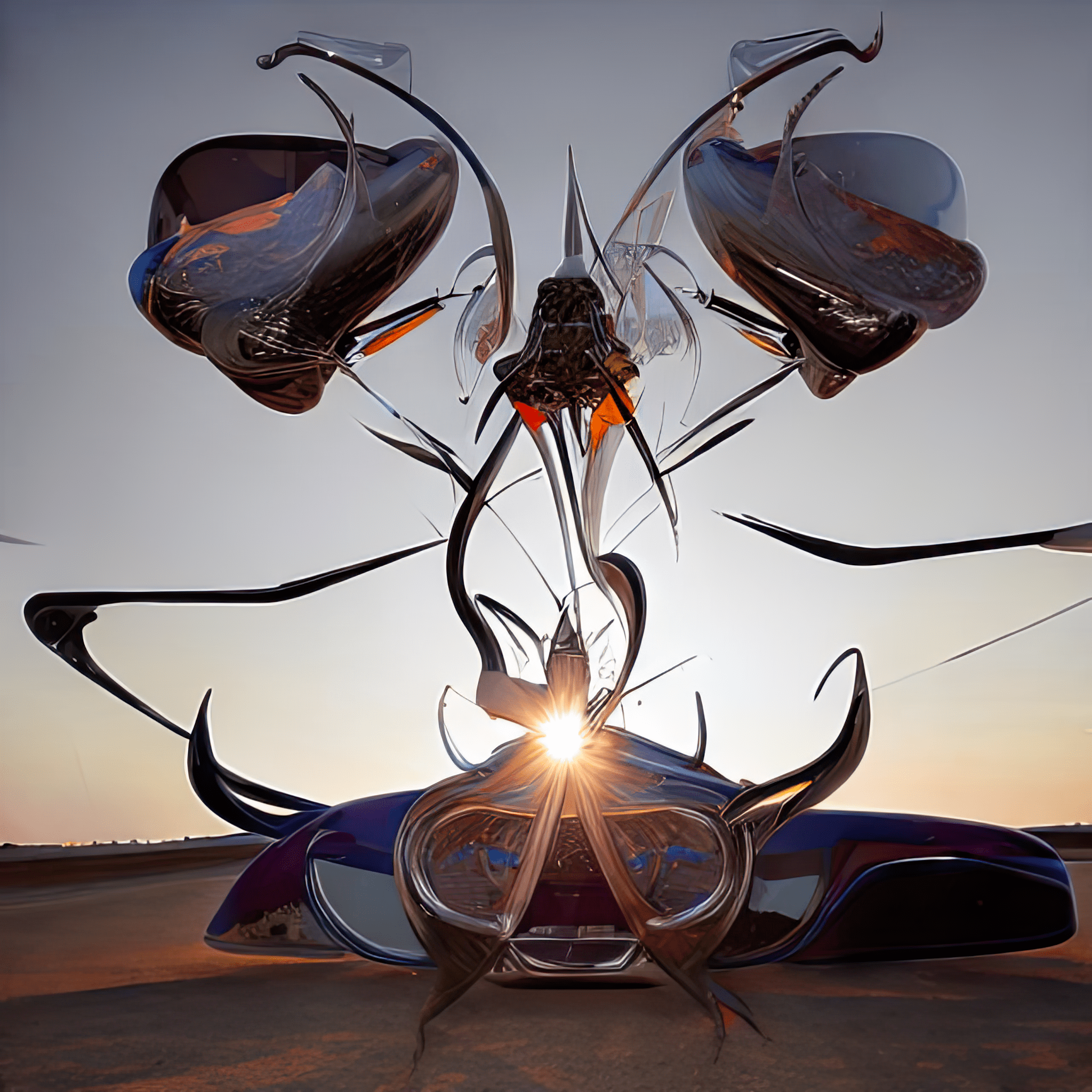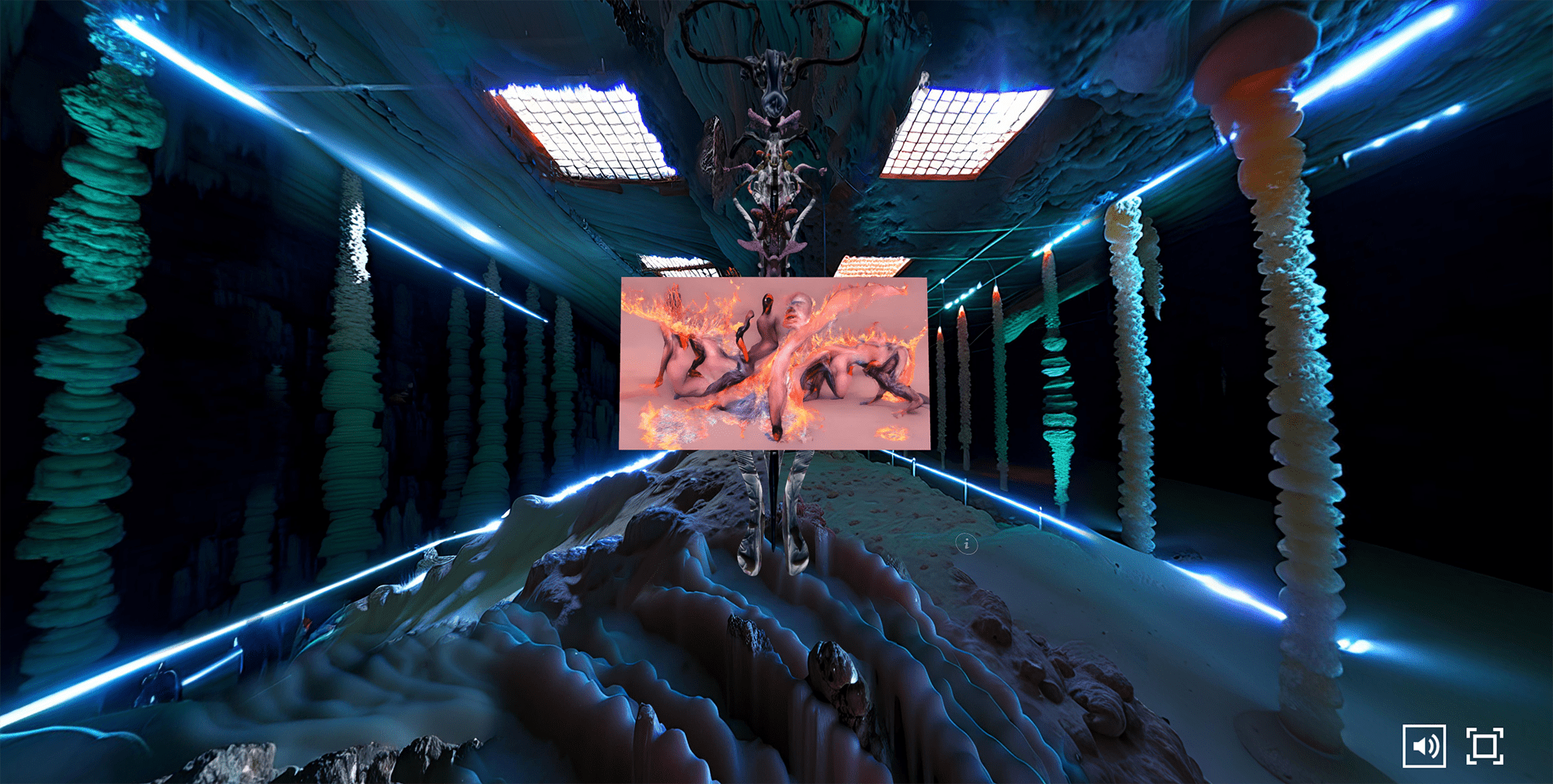Divining the future through a flaw in the system? – Crosslucid creates new realities and question old structures in their art. In doing so, they make an important contribution to the future of algorithms, and show how artificial intelligence is becoming a tool for artists instead of a threat.
The artist duo Crosslucid consists of Sylwana Zybura and Tomas C. Toth. Their work takes place largely in the digital realm, so it may come as little surprise that they met there, too, on Tumblr. In 2014, they both decided to move to Berlin, and four years later founded the Crosslucid artist collective.
They describe one element of their work as the “prototyping of emerging futures.” To accomplish this, they try to behave and think as if they already lived in a more just world. While certainly important in itself, this positive view of a future shaped by technology also creates the conditions under which such a future might emerge. As an artist collective, they are thus creating a vision of the future that represents an alternative to those disseminated by corporations.
Generative networks in art
While their works are frequently concerned thematically with technology, the Crosslucid artists often create with the help of – or in collaboration with, as they say – technological tools such as generative adversarial networks (GANs). A GAN, in turn, consists of two competing artificial neural networks, or algorithmic systems modeled on the human brain.
The first network, called the discriminator network, receives input, for instance in the form of photographs. The second network, called the generator network, randomly generates output. In the example given, this would be image material, with the goal of replicating the photographs as closely as possible. The discriminator then evaluates the accuracy of this randomly generated image content – in this case, to determine whether it matches the photographs provided as input, for example.
Thus, while one network tries to create a synthetic image that is as close as possible to the photographs, the other network attempts to recognize the artificially created image and expose it as a fake. The two networks learn from each other in the process. The one network gets better at creating synthetic images, while the other improves its efforts to identify those very images as fake. In sum, machine learningMachine Learning Ein Teilbereich der KI, bei dem Systeme aus Daten lernen und sich verbessern, ohne explizit programmiert zu werden. is taking place.
Landscapes – Using algorithmic systems to envision the future
In their Landscapes project, Crosslucid shows how a GAN of this kind can be used to produce visions of the future. To create this work, they “collaborated” with a GAN, using photographs from their past project Landscapes between Eternities as input.
According to Crosslucid, this dataset is intended to reflect society’s real diversity, and is more inclusive than other man-made datasets that necessarily include human biases. The artists say their process generated forms and ideas that create a future space in which body and mind are freed from conventional patterns of behavior.
Collaborating with an algorithmic system, such as in the case of Landscapes, is a deeply transformative experience that alters the way we approach artistic creation.
Crosslucid
One notable aspect of this work is that while Generative Adversarial Networks (GANs) are typically evaluated based on their accuracy, Crosslucid artists intentionally utilize the glitches and small faults that often arise during the GAN process. In contrast to viewing these glitches as undesirable, the artists deliberately employ them in their creations. They do this by consciously using neural networks that are not appropriate for the type of input being used, for example, by asking a system trained on texts to generate images.

In the case of the Landscapes project, this has resulted in portraits that appear simultaneously natural and highly artificial. The portraits do not look like photographs of existing people. Yet they are recognizably portraits of beings that are at least human-like.
If the networks were to function wholly without error, they would do no more than reproduce the original input in a different form, without creating anything genuinely new . In this case, they would have created human-looking portraits that resembled the input images. However, these small flaws constitute a creative moment that makes it possible to do more than generate a kind of mirror of the past, of the input alone. Instead, they enable the creation of something entirely new, and potentially of the future. The use of the GAN is thus intended as a means of conscious dreaming, able to depict a future that does not arise purely from the past.
Lucid dreaming through adversarial network glitches
The idea behind using neural networks as “collaborators” derives from the recognition that if we have a very specific idea of the future, we will reproduce it over and over again. If we develop our To break free of this constraint, Crosslucid use what are typically regarded as errors in the neural networks to produce their images.
Just as they extract creative value from algorithmic systems’ functional flaws, they also see the benefits that well-functioning algorithmic systems can offer in other societal areas by providing a new way to explore and discover the world. As the artists themselves say, they are thereby working against the dominant myths that surround the technology, and creating positive visions of a future with algorithmic systems.
Diversifying conversations with artist participation
In this regard, the Crosslucid artists recognize that the speed of artificial intelligence’s development is creating hurdles. This rapid pace makes it hard for many people to participate actively in current discussions on the issue, they say. As a consequence, by the time conversations become more diverse and artists too are able to participate, for example, structures have already emerged that are difficult to change. Hype cycles also make it more difficult to have nuanced conversations, the Crosslucid artists say.
Yet this is a time when we desperately need more creativity to cope with the multiple crises swirling around us – crises of trust, climate, equality and much more.
Geoff Mulgan – another world is possible
To facilitate more diversity in conversations about current technological developments, a key step would be to provide more funding for artists. If this were in place, the members of Crosslucid argue, artists would be able to go beyond mere technological critique. More generally, the pair calls on artists “to engage in inter-disciplinary collaborations with the aim to research and develop actual technology, tools and their re-configured narratives, laying outside of the desires of corporate intelligence.“ This would allow art to grow beyond its status as a critic of current technology and instead assume a more active social role, helping to shape and stimulate visions of the future in this field.

Opening up new worlds of algorithmic knowledge
This is precisely what Crosslucid try to do in their film project “Dwellers Between the Waters,” two scenes from which can currently be seen in an online exhibition at the Epoch gallery. To produce the scenes from this project, Crosslucid worked with text-to-image models.
At its core, Dwellers Between the Waters represents a bold and daring foray into the intersection of artificial intelligence, magic and alchemy, with a view to offering viable solutions to the traumas of our contemporary age.
Crosslucid
Crosslucid is also displaying a 3D sculpture and a video work as part of the Xenospace online exhibition. A virtual stroll through this exhibition allows visitors to experience the sights and sounds that emerge when machine learning is used to create art that aims to find solutions to current crises, and seeks to start a conversation extending beyond the confines of our physical world. This generates new perspectives, which in the best case materialize in change.

Crosslucid’s playful use of neural networks in their projects allows for a different approach to algorithmic systems, as well as to our reality and to alternative visions of the future.
To conclude, Crosslucid was asked about their vision for the future. We reproduce their answer here without comment, as the final element in this blog series.
Crosslucid’s vision for coexisting with algorithmic systems in the future:
Envisioning a positive future with algorithmic systems requires a shift in our perception from one of dominance to one of co-evolution and wisdom. Rather than seeing AI as a direct competitor, we should consider it a complex companion that reshapes our abilities and self-image. To achieve this, we must adopt a critical approach to non-human intelligence while also acknowledging its potential for rerouting our current path toward a more sustainable vision of coexistence, including an adequate royalty system in place. Through current developments we have the potential to enter a new era of abundant media that affirms the social value of art and artists as polymaths operating across multitude of realities and lores. Our hope is that this will lead to a re-entanglement with a more meaningful and compassionate cosmology.
As we move forward, we must recognize that true intelligence is not just a matter of processing data, but of feeling and experiencing the world in all its complexity. In this way, our collaboration with AI can lead to a more holistic understanding of ourselves and the multi-species biosphere.
This text is licensed under a Creative Commons Attribution 4.0 International License


Write a comment